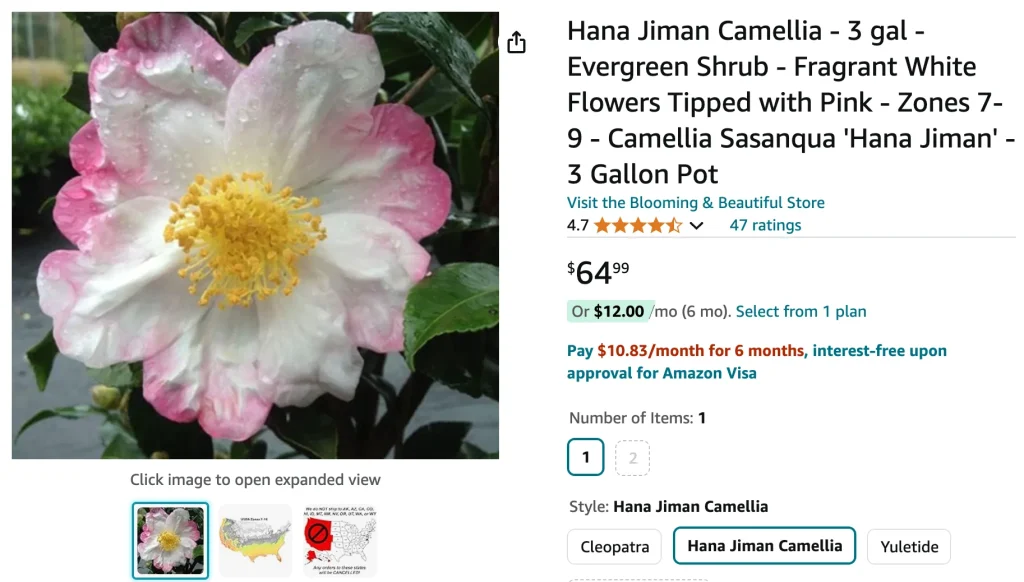
FAQs About Hana Jiman Camellia: Everything You Need to Know
If you’re a garden enthusiast like me, the Hana Jiman Camellia might have caught your eye. This striking plant, with its vibrant blooms and lush foliage, adds a touch of elegance to any garden. I’ve delved into the details of this camellia and am excited to share everything you need to know about it.
230 Species in Genus Camellia
What Is Hana Jiman Camellia?
Hana Jiman Camellia is a variety of the Camellia japonica, a species renowned for its beautiful, large flowers and glossy leaves. Originating from Japan, this camellia is celebrated for its impressive blossoms, which can range from deep pink to vibrant red. The petals have a soft, velvety texture, making it a favorite among gardeners who appreciate a touch of luxury in their landscapes.
How to Care for Hana Jiman Camellia?
Caring for Hana Jiman Camellia is relatively straightforward once you understand its basic needs. Here’s how I keep mine thriving:
- Light: This camellia prefers partial shade. In my experience, it does best with morning sun and afternoon shade. Too much direct sunlight can scorch the leaves and flowers.
- Soil: Well-drained, acidic soil is crucial. I mix pine bark and compost into the soil to improve drainage and maintain the right pH level.
- Watering: Regular watering is essential, but avoid waterlogging. I water my camellia deeply once a week, allowing the soil to dry slightly between waterings.
- Fertilizing: Use a fertilizer formulated for acid-loving plants. I apply it in early spring and again in mid-summer to support healthy growth and flowering.
- Pruning: Prune the camellia after it blooms to maintain its shape and remove any dead or diseased branches. I find light pruning encourages a fuller, more compact plant.
How to Propagate Hana Jiman Camellia?
Propagating Hana Jiman Camellia can be a rewarding project. Here’s how I do it:
- Cuttings: Take semi-hardwood cuttings in late summer. I choose healthy stems and remove the lower leaves, dipping the cut ends in rooting hormone.
- Planting: Plant the cuttings in a mix of peat moss and perlite, keeping them moist but not soggy. I use a propagation tray and cover it with a plastic dome to maintain humidity.
- Transplanting: After a few months, when the cuttings have developed roots, I transplant them into individual pots with the same soil mix.
What to Plant with Hana Jiman Camellia?
Pairing Hana Jiman Camellia with complementary plants can enhance your garden’s aesthetic. Here are some companions I’ve found work well:
- Azaleas: Their vibrant blooms and similar soil requirements make them excellent partners.
- Hostas: The lush foliage of hostas contrasts beautifully with the camellia’s flowers and provides ground cover.
- Fern: Ferns add a soft, feathery texture that contrasts nicely with the camellia’s glossy leaves.
How to Use Hana Jiman Camellia in Landscaping?
In landscaping, Hana Jiman Camellia can be a focal point or an elegant background plant. I’ve used it in various ways:
- Focal Point: Plant it as a centerpiece in a garden bed to draw attention to its striking flowers.
- Hedges: With regular pruning, it can be shaped into a dense, flowering hedge that provides privacy and beauty.
- Container Planting: For a portable option, I grow it in a large container, which allows me to move it around to highlight its beauty in different parts of my garden.
Is Hana Jiman Camellia Toxic?
Hana Jiman Camellia is non-toxic to humans and pets. I’ve never had issues with it being harmful, but it’s always a good practice to prevent pets from nibbling on plants.
Common Problems and Solutions
Like any plant, Hana Jiman Camellia can face challenges. Here’s what I’ve encountered and how I address them:
- Leaf Spot: Caused by fungal infections, I treat this with a fungicide and ensure good air circulation around the plant.
- Pests: Aphids and spider mites can be problematic. I use insecticidal soap or neem oil to manage infestations.
- Root Rot: This occurs in poorly drained soil. Ensuring good drainage and avoiding overwatering helps prevent root rot.
Conclusion
The Hana Jiman Camellia is a stunning addition to any garden, offering beauty and elegance with relatively simple care. From understanding its needs to dealing with common issues, I hope these insights help you appreciate and nurture your camellia. Whether you’re using it as a focal point or a complementary plant, this camellia can truly enhance your outdoor space.
If i die, water my plants!



